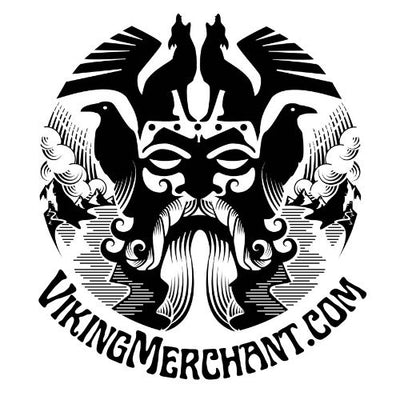The Wild Hunt: A Mystical Yuletide Procession in Viking Skies
Posted by Amber Lee on
Among the many legends that proliferated in the Viking Age, none was perhaps as eerie or captivating as the tale of the Wild Hunt. A phantom procession led by the Allfather Odin himself, this spectral cavalcade was said to sweep across the winter skies, a harbinger of change, and a symbol of the relentless march of time and fate.

The Wild Hunt, known in Old Norse as "Óðinn's hunt," has roots that delve deep into pre-Christian pagan traditions of Northern Europe. Although primarily associated with Norse mythology, variations of the Wild Hunt can be found in many European folklore traditions, from Germany to Britain.
Odin, atop his eight-legged steed Sleipnir, would lead the hunt. Accompanying him were a host of spectral beings: fallen warriors from Valhalla, ethereal hounds with glowing eyes, and sometimes even mythological creatures like elves and Valkyries. Their numbers and the sound of their gallop were said to fill the night, a cacophony of otherworldly sounds.
The appearance of the Wild Hunt was an omen. To witness it was to face a dire warning: calamities, wars, or significant changes were on the horizon. For individuals, being caught outdoors during the hunt was a perilous predicament, as they risked being swept up in its fervor and carried away to the afterlife or another realm.
At its core, the Wild Hunt was symbolic of the inexorable force of nature and destiny. It represented the transition phases, from one season to the next, from life to death, and the cyclical nature of existence. Odin's leadership of the hunt underscored his role as a god of death, wisdom, and poetic melancholy.
Over time, as Christianity spread through Scandinavia, the narrative of the Wild Hunt adapted. Odin and his ethereal procession were sometimes replaced or accompanied by figures like Saint Nicholas or other Christian saints. Despite these changes, the core essence of the legend, the eerie procession that signified change and transition, remained intact.
In modern times, the Wild Hunt has been referenced in literature, music, and art. Its haunting imagery and profound symbolism continue to inspire and resonate, reminding us of the mysteries of the universe that still lie beyond our understanding.
The legend of the Wild Hunt offers a mesmerizing window into the Viking psyche, their relationship with the cosmos, and their understanding of life's transient nature. It stands as a testament to human civilization's attempt to make sense of the unknown, capturing the essence of awe, fear, and wonder that the universe inspires.
